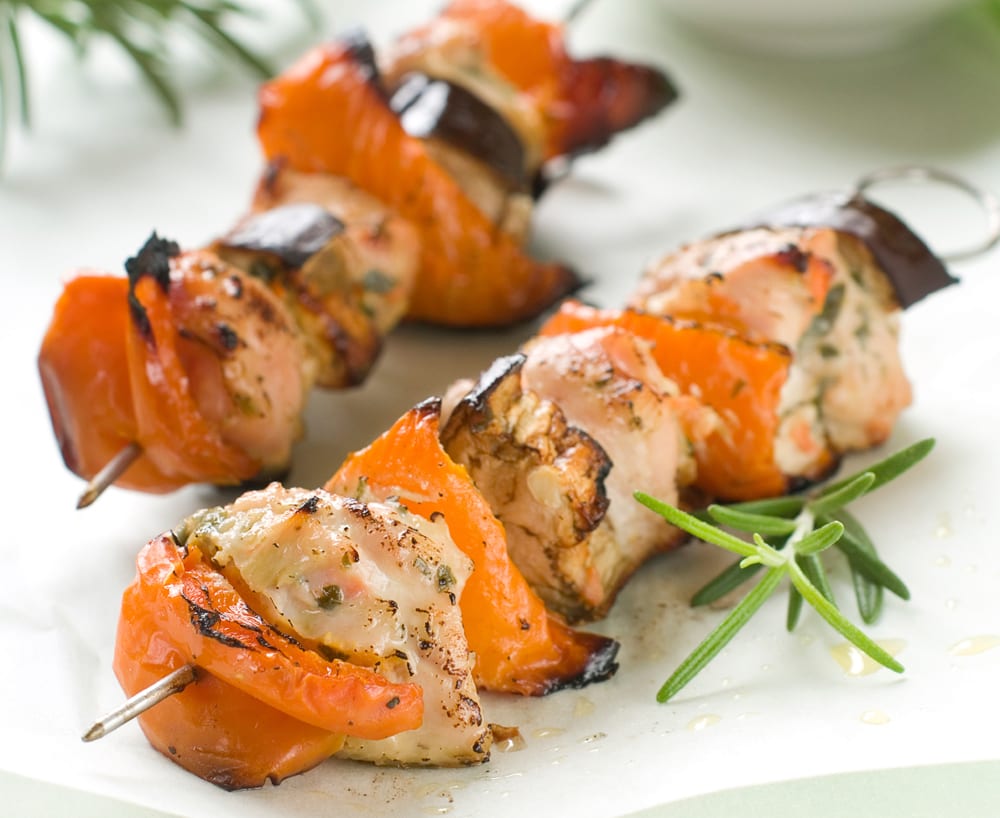This article is supplied by Taste Alberta, one of AMA’s Backyard BBQ sponsors.
Nothing is more enticing than the summer scent of good food grilling on the barbecue. It’s easy, fun and can be a healthy way to eat.
“Grilling makes it easier to cook at home, with less cleanup,” says Brenda Arychuk, a registered dietitian in the Edmonton area. “That makes you more motivated to eat healthy and eat at home.” Also, grilling “avoids the pitfalls of processed foods and breaded coatings.”
Using a barbecue’s “dry heat, with the fat dripping away,” produces a leaner result, Arychuk adds.
But is there a downside to those grill marks?
Arychuk explains that prolonged cooking on any hot surface, whether on the barbecue, under the broiler or in the frying pan, can cause charring, which can produce carcinogens associated with cancer. But these can be limited or avoided.
“The important thing is to start with lean ingredients,” she says. “Chicken and turkey are excellent choices for grilling because they are lean—and a great source of protein.
MORE TO READ
Tips for grilling lobster on your barbecue
“Women and children often don’t get enough protein,” she adds, “so these are good options.”
There are about 43 turkey farmers and 240 chicken farmers in the province. When you buy Alberta poultry you are not just selecting a nutritious meal but also supporting local food producers.

BARBECUING TIPS
• Choose lean meats, like chicken and turkey breast, and remove visible fat and skin.
• Marinating, especially using acid-based marinades with wine, lemon juice or vinegar that have little or no oil, can not only add flavour and tenderness, but help reduce charring.
• Add veggies and fruit to the barbecue.
• Aim for less cooking time on the barbecue by cutting meat or poultry into smaller pieces.
• Use spatulas or tongs to avoid piercing, which limits juices escaping onto the coals and flaring up. Also use a drip rack to catch the fat.
• Use a meat thermometer. For poultry, aim for 165 F or 74 C.
• Scrape off all the residue from your barbecue every time you cook.
MORE TO READ
How to avoid backyard grilling disasters
• Avoid contamination and bacteria build-up by thawing and marinating meats in the refrigerator, cutting on clean surfaces, and keeping food hot after grilling.
• Always serve grilled foods on a fresh plate; don’t just rinse off the one used to take raw poultry out to the barbecue.
For more about cooking times, visit chicken.ca.
PLANK-GRILLED TURKEY
Cara Prout, executive director of Alberta Turkey Producers, likes to use cedar planks when cooking turkey on the barbecue. “Not only does it give turkey a lovely smokey flavour, it keeps it moist while avoiding charring,” she says.
Prout also recommends brining the turkey first, to ensure moist and juicy results of this healthy, lean meat.
Click here for recipes and more on plank-grilling turkey. For more information on turkey brining, visit here.
